The life of peasants in the Middle Ages was harsh, full of hardships and trials. Heavy taxes, devastating wars and crop failures often deprived the peasant of the most necessary and forced him to think only about survival. Just 400 years ago in richest country Europe - France - travelers came across villages whose inhabitants were dressed in dirty rags, lived in semi-dugouts, holes dug in the ground, and became so wild that in response to questions they could not utter a single articulate word. It is not surprising that in the Middle Ages the view of the peasant as a half-animal, half-devil was widespread; the words "villan", "villania", denoting rural residents, meant at the same time "rudeness, ignorance, bestiality".
No need to think that all the peasants in medieval Europe looked like devils or ragamuffins. No, many peasants had gold coins and elegant clothes hidden in their chests, which they wore on holidays; peasants knew how to have fun at village weddings, when beer and wine flowed like water and everyone ate themselves in a whole series of half-starved days. The peasants were quick-witted and cunning, they clearly saw the merits and demerits of the people they had to deal with in their simple life: a knight, a merchant, a priest, a judge. If the feudal lords looked at the peasants as devils crawling out of hellish holes, then the peasants paid their lords in the same coin: a knight rushing through the sown fields with a pack of hunting dogs, shedding someone else's blood and living at the expense of someone else's labor, seemed to them not a man, but a demon.
It is generally accepted that it was the feudal lord who was the main enemy of the medieval peasant. The relationship between them was indeed complicated. The villagers more than once rose to fight against their masters. They killed seniors, plundered and set fire to their castles, captured fields, forests and meadows. The largest of these rebellions were the Jacquerie (1358) in France, the speeches led by Wat Tyler (1381) and the Ket brothers (1549) in England. One of the most important events in the history of Germany was the Peasants' War of 1525.
Such formidable outbursts of peasant discontent were rare. They occurred most often when life in the villages became truly unbearable due to the excesses of soldiers, royal officials, or the attack of feudal lords on the rights of peasants. Usually the villagers knew how to get along with their masters; both of them lived according to old-fashioned, ancient customs, in which almost all possible disputes and disagreements were provided.
Peasants were divided into three large groups: free, land dependent and personally dependent. There were comparatively few free peasants; they did not recognize the power of any lord over themselves, considering themselves free subjects of the king. They paid taxes only to the king and wanted to be judged only by the royal court. Free peasants often sat on former "no man's" lands; it could be cleared forest glades, drained swamps, or lands conquered from the Moors (in Spain).
A land dependent peasant was also considered free by law, but he sat on land belonging to the feudal lord. The taxes that he paid to the lord were considered as payment not "per person", but "from the land" that he uses. Such a peasant, in most cases, could leave his piece of land and leave the seigneur - most often no one kept him, but he basically had nowhere to go.
"Peasants at work". French miniature of the 16th century.
Finally, a personally dependent peasant could not leave his master when he wanted to. He belonged in body and soul to his lord, was his serf, that is, a person attached to the lord by a lifelong and indissoluble bond. The personal dependence of the peasant was expressed in humiliating customs and rituals, showing the superiority of the master over the mob. The serfs were obliged to perform corvée for the lord - to work in his fields. The corvée was very difficult, although many of the duties of serfs seem to us today rather harmless: for example, the custom of giving a seigneur a goose for Christmas, and a basket of eggs for Easter. However, when the patience of the peasants came to an end and they took up pitchforks and axes, the rebels demanded, along with the abolition of corvée, the abolition of these duties, which humiliated their human dignity.

"Agricultural work" / plowing). Miniature of the 14th century.
Serfs in Western Europe not much remained by the end of the Middle Ages. Peasants were freed from serfdom by free city-communes, monasteries and kings. Many feudal lords also understood that it was more reasonable to build relations with the peasants on a mutually beneficial basis, without oppressing them excessively. Only the extreme need and impoverishment of the European chivalry after 1500 forced the feudal lords of some European countries to launch a desperate offensive against the peasants. The purpose of this offensive was to restore serfdom, "the second edition
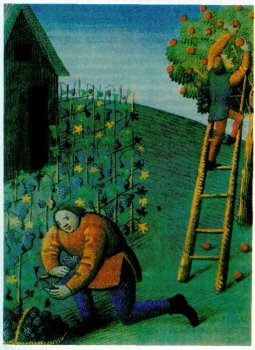
"Vintage". From a medieval miniature of the 13th century.
serfdom”, but in most cases the feudal lords had to be content with the fact that they drove the peasants from the land, seized pastures and forests, and restored some ancient customs. The peasants of Western Europe responded to the onslaught of the feudal lords with a series of formidable uprisings and forced their masters to retreat.
The main enemies of the peasants in the Middle Ages were still not the feudal lords, but hunger, wars and diseases. Hunger was a constant companion of the villagers. Once every 2-3 years, there was a shortage of crops in the fields, and once every 7-8 years, a real famine visited the village, when people ate grass and tree bark, dispersed in all directions, doing begging. Part of the village population died out in such years; it was especially hard for children and the elderly. But even in the harvest years, the peasant's table did not burst with food - his food was mainly vegetables and bread. Residents of Italian villages took lunch with them to the field, which most often consisted of a loaf of bread, a slice of cheese and a couple of onions. The peasants did not eat meat every week. But in autumn, carts loaded with sausages and hams, heads of cheese and barrels of good wine stretched from the villages to city markets and castles of feudal lords. The Swiss shepherds had a rather cruel, from our point of view, custom: the family sent their teenage son alone for the whole summer to graze goats in the mountains. They didn’t give him food from home (only sometimes a compassionate mother, secretly from his father, slipped a piece of cake into her bosom for the first days). The boy drank goat's milk for several months, ate wild honey, mushrooms, and in general everything that he could find edible in the alpine meadows. Those who survived in these conditions, after a few years, became so healthy that all the kings
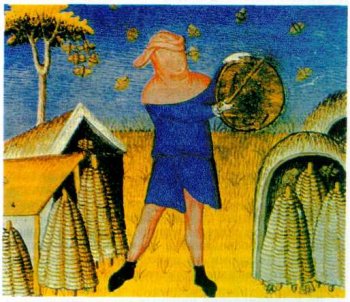
"Beekeeping". Medieval miniature of the 15th century.
Europe sought to replenish their guards exclusively with the Swiss. The brightest in the life of the European peasantry was probably the period from 1100 to 1300. The peasants plowed more and more lands, applied various technical innovations in the cultivation of fields, studied gardening, horticulture and viticulture. There was enough food for everyone, and the population of Europe increased rapidly. Peasants who could not find work in the countryside went to the cities, where they were engaged in trade and crafts. But by 1300, the possibilities for the development of the peasant economy were exhausted - there were no more undeveloped lands, the old fields were depleted, the cities increasingly closed their gates to uninvited newcomers. It became more and more difficult to feed, and weakened by poor nutrition and periodic hunger, the peasants became the first victims of infectious diseases. The plague epidemics that tormented Europe from 1350 to 1700 showed that the population had reached its limit and could no longer increase.
At this time, the European peasantry entered a difficult period in its history. Dangers are piling up from all sides: in addition to the usual threat of hunger, there are also diseases, and the greed of the royal tax collectors, and attempts at enslavement by the local feudal lord. The villager has to be extremely careful if he wants to survive in these new conditions. It’s good when there are few hungry mouths in the house, so the peasants of the late Middle Ages get married late and have children late. France in the 16th and 17th centuries there was such a custom: a son could bring a bride to his parents' house only when his father or mother was no longer alive. Two families could not sit on the same plot of land - the harvest was barely enough for one couple with their offspring.
The peasants' caution was manifested not only in planning their family life. Peasants, for example, distrusted the market and preferred to produce the things they needed themselves rather than buy them. From their point of view, they were certainly right, because price fluctuations and the cunning of urban merchants placed the peasants in too strong and risky dependence on market affairs. Only in the most developed regions of Europe - Northern Italy, the Netherlands, lands on the Rhine, near cities such as London and Paris - the peasants from the XIII century. actively traded agricultural products in the markets and bought the products of artisans they needed there. In most other areas of Western Europe, rural residents up to the 18th century. they produced everything they needed on their own farms; they came to the markets only occasionally to pay the quitrent to the lord with the proceeds.
Before the emergence of large capitalist enterprises that produced cheap and high-quality clothes, shoes, household items, the development of capitalism in Europe had little effect on the peasant who lived in the outback of France, Spain or Germany. He wore home-made wooden shoes, homespun clothes, lit his home with a torch, and often made dishes and furniture himself. These home craft skills, long preserved by the peasants, from the 16th century. used by European entrepreneurs. Guild charters often forbade the founding of new industries in cities; then rich merchants distributed raw materials for processing (for example, combing yarn) to the inhabitants of the surrounding villages for a small fee. The contribution of the peasants to the formation of early European industry was considerable, and we are only now beginning to truly appreciate it.
Despite the fact that they willy-nilly had to do business with city merchants, the peasants were wary not only of the market and the merchant, but of the city as a whole. Most often, the peasant was only interested in the events that took place in his native village, and even in two or three neighboring villages. During the Peasants' War in Germany, detachments of villagers each acted on the territory of their own small district, thinking little about the situation of their neighbors. As soon as the troops of the feudal lords hid behind the nearest forest, the peasants felt safe, laid down their arms and returned to their peaceful pursuits.
The life of a peasant almost did not depend on the events that took place in " big world”, - the crusades, the change of rulers on the throne, the disputes of learned theologians. It was much stronger influenced by the annual changes that took place in nature - the change of seasons, rains and frosts, mortality and the offspring of livestock. The circle of human communication of the peasant was small and limited to a dozen or two familiar faces, but constant communication with nature gave the villager a rich experience of spiritual experiences and relationships with the world. Many of the peasants subtly felt the charm of the Christian faith and intensely reflected on the relationship between man and God. The peasant was not at all a stupid and illiterate idiot, as his contemporaries and some historians portrayed him many centuries later.
Middle Ages for a long time treated the peasant contemptuously, as if not wanting to notice him. Wall paintings and book illustrations of the XIII-XIV centuries. peasants are rarely depicted. But if artists draw them, then they must be at work. The peasants are clean, neatly dressed; their faces are more like the thin, pale faces of monks; lining up in a row, the peasants elegantly swing their hoes or flails to thresh grain. Of course, these are not real peasants with faces weathered from constant work in the air and clumsy fingers, but rather their symbols, pleasing to the eye. European painting notices a real peasant from about 1500: Albrecht Dürer and Pieter Brueghel (also nicknamed "The Peasant") begin to depict the peasants as they are: with rude, semi-animal faces, dressed in ridiculous baggy outfits. The favorite plot of Brueghel and Dürer is peasant dances, wild, similar to bear trampling. Of course, there is a lot of mockery and contempt in these drawings and engravings, but there is something else in them. The charm of energy and tremendous vitality emanating from the peasants could not leave the artists indifferent. The best minds of Europe are beginning to think about the fate of those people who held on their shoulders
a brilliant society of knights, professors and artists: the language of the peasants begins to be spoken not only by jesters who amuse the public, but also by writers and preachers. Saying goodbye to the Middle Ages, European culture for the last time showed us a peasant who was not at all bent at work - in the drawings of Albrecht Dürer we see peasants dancing, secretly talking about something with each other, and armed peasants.
The life of peasants in the Middle Ages was harsh, full of hardships and trials. Heavy taxes, devastating wars and crop failures often deprived the peasant of the most necessary and forced him to think only about survival. Just 400 years ago, in the richest country in Europe - France - travelers came across villages whose inhabitants were dressed in dirty rags, lived in semi-dugouts, holes dug in the ground, and became so wild that in response to questions they could not utter a single articulate word. It is not surprising that in the Middle Ages the view of the peasant as a half-animal, half-devil was widespread; the words "villan", "villania", denoting the villagers, meant at the same time "rudeness, ignorance, bestiality".
No need to think that all the peasants in medieval Europe looked like devils or ragamuffins. No, many peasants had gold coins and elegant clothes hidden in their chests, which they wore on holidays; peasants knew how to have fun at village weddings, when beer and wine flowed like water and everyone ate themselves in a whole series of half-starved days. The peasants were quick-witted and cunning, they clearly saw the merits and demerits of the people they had to deal with in their simple life: a knight, a merchant, a priest, a judge. If the feudal lords looked at the peasants as devils crawling out of hellish holes, then the peasants paid their lords in the same coin: a knight rushing through the sown fields with a pack of hunting dogs, shedding someone else's blood and living at the expense of someone else's labor, seemed to them not a man, but a demon.
It is generally accepted that it was the feudal lord who was the main enemy of the medieval peasant. The relationship between them was indeed complicated. The villagers more than once rose to fight against their masters. They killed seniors, plundered and set fire to their castles, captured fields, forests and meadows. The largest of these uprisings were the Jacquerie (1358) in France, the speeches led by Wat Tyler (1381) and the Ke-tov brothers (1549) in England. One of major events in the history of Germany was the Peasants' War of 1525.
In European states, it began to form from the middle of the 16th century. It was then that a special class of the population was singled out - peasants who lived on the territory of the landowner or feudal lord and were completely or partially dependent on him. All peasants, without exception, were subjected to conscription. The compulsory duties of this estate were numerous: from daily labor on the estate of the feudal lord to military service. The severity of the labor burden depended on many factors, including the age of the peasant, his abilities and skills. Often, feudal lords, using their power, could impose an additional burden on those whom they personally disliked. It was the compulsory obligations of dependent peasants that became the main topic outlined in this article.
Dependent peasants: who are they?
Consider the forms of dependence of the peasants on the landowner or feudal lord: complete and incomplete. Peasants who were completely dependent on the owner were usually called personally dependent. Their position in society was one of the most deplorable. They did not have not only the right of ownership to any household items, including clothing, but also the right to free will and even to their own lives. A similar form of peasant dependence was characteristic of states in which slavery flourished. The compulsory obligations of dependent peasants from this class could not be challenged even in the event of an inappropriate attitude of the owner towards them. The feudal lord, in turn, had the right to sentence the peasant to and even deprive him of his life for any offense.
The incomplete dependence of the peasants consisted mainly in their economic subordination to the feudal lord. One of the compulsory duties of dependent peasants is work in the fields or in the master's workshops. Serving his estate or estate, they at the same time had personal rights: they could move freely, acquire or sell their own property. In addition, when cruelty or an unfair attitude towards a peasant was manifested, the feudal lord could be subjected to legal proceedings. The forced labor of a dependent peasant in the case of his incomplete dependence was reduced to working off a debt or rent for the use of a land allotment provided to him by the feudal lord. Due to the fact that many peasants did not have the opportunity to acquire land or equipment for its cultivation, the feudal lords often took advantage of this, and "debts" were returned to him for several decades.
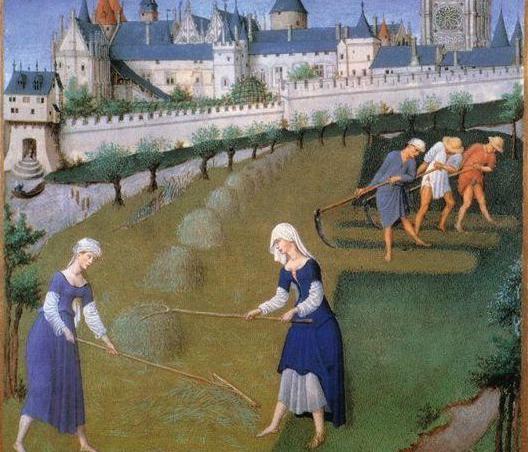
Signs of forced labor in the feudal economy
Like any economic or social phenomenon, the compulsory obligations of dependent peasants can be determined using several characteristic features, which include the following:
- The dependent peasant has land in use, which is the property of the feudal lord.
- In addition to working on their own land plots, the peasant also cultivated that piece of land, which was listed as "master's", and all the products from it went exclusively to the feudal lord.
- For the processing of land plots (peasant and lordly), agricultural equipment was used, including horses belonging to the peasant.
- For unscrupulous performance of forced labor, a peasant could be punished in the form of an increase in the size of the tax in kind (tire) or an additional period of gratuitous labor for the feudal lord (corvée).
Otherwise, the forms of forced peasant labor in feudal production are somewhat different. Let's consider each of them in more detail.
Features of corvee management
As mentioned above, in medieval Europe there were several types of work for which bonded people did not receive payment. One of the compulsory duties of dependent peasants - corvée - was distributed throughout almost the entire territory of Western and of Eastern Europe including Rus'. The essence of this type of labor service consisted in the free labor of the dependent population in the fields of the feudal lord using their own equipment. At the same time, the peasant also cultivated his plot of land, growing and producing food for his own consumption. The main drawback of the corvee system was the constant need for supervision by the feudal lord, because often the forced work was carried out by the peasants on the principle of "somehow".

In the states of the Middle Ages, corvee (forced labor of dependent peasants) existed from about the 8th-9th to the 18th century. This form of gratuitous labor became most widespread on the territory of the state of Rus' and existed there almost until the end of the 19th century under the name "sharework".
Features of quitrent farming
Another of the compulsory duties of dependent peasants in medieval Europe - dues - existed at about the same time as corvée. The essence of this phenomenon was that almost all the land of the feudal lord was given to the use of the peasant, who cultivated it. on their own using your own inventory.
The harvest received from allotments was divided into two parts, one of which was paid to the feudal lord, and the other was used by the peasant at his own discretion. In connection with the spread and development of crafts, the natural (grocery) quitrent was combined with cash rent, and in some estates it was completely replaced by it. Such compulsory obligations of dependent peasants as quitrents in kind and money served as an impetus for an even greater division of labor and, as a result, the development of commodity-money relations.
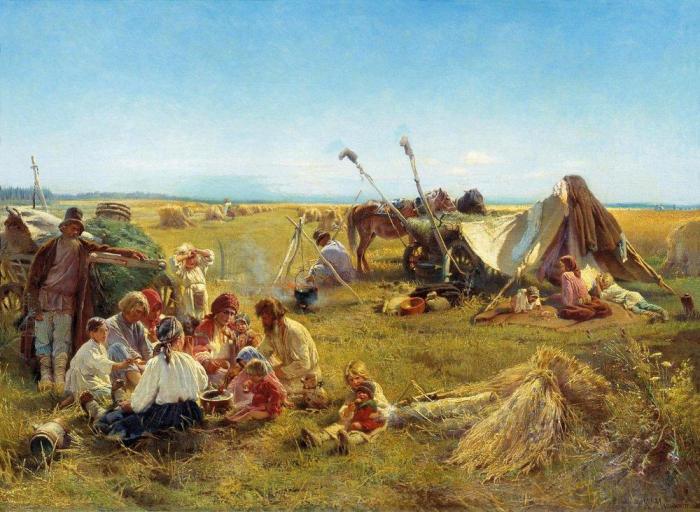
labor rent
Labor rent as a form of forced labor was one of the easiest. In her case, the dependent peasant received from the feudal lord a plot of land, animals for breeding, agricultural tools and other equipment. As payment for the use of these benefits, he had to work in the production of the landowner for a certain period. By the way, such a system of forced labor was most common in the countries of the East, where there was practically no personal dependence of the peasants. Rent was often paid with products produced on the household of a dependent peasant, household items, jewelry, cloth or money.
The term "Middle Ages" is most applicable to Western Europe, because it was here that all those phenomena took place that are firmly connected with ideas about the Middle Ages. These are castles, knights and much more. The peasants in this society had their own place, which practically did not change for several centuries. Today, modern people in a couple have the most vague ideas about how the peasants lived in the Middle Ages, and this is not surprising, because life and customs in the village have changed a lot over these centuries ...
At the turn of the VIII and IX centuries. in the Frankish state (it united France, Germany and most of Italy) there was a revolution in relations around land ownership. There was a feudal system, which was the basis of medieval society.
Kings (holders of supreme power) relied on the support of the army. For the service close to the monarch received large land. Over time, a whole class of wealthy feudal lords appeared, who had vast territories within the state. The peasants who lived on these lands became their property.
Another major landowner was the church. Monastic allotments could cover many square kilometers. How did peasants live in the Middle Ages on such lands? They received a small personal allotment, and in exchange for this they had to work a certain number of days on the owner's territory. It was economic coercion. It affected almost all European countries except Scandinavia.

The church played a big role in the enslavement and dispossession of the villagers. The life of the peasants was easily regulated by the spiritual authorities. The common people were instilled with the idea that uncomplaining work for the church or the transfer of land to it would later affect what would happen to a person after death in heaven.
The existing feudal land ownership ruined the peasants, almost all of them lived in noticeable poverty. This was due to several phenomena. Due to regular military service and work for the feudal lord, the peasants were cut off from their own land and had practically no time to deal with it. In addition, a variety of taxes from the state fell on their shoulders. Medieval society was based on unjust prejudices. For example, peasants were subject to the highest judicial fines for misdemeanors and violations of the law.
Villagers were deprived of their own land, but never driven off it. Subsistence farming was then the only way to survive and earn money. Therefore, the feudal lords offered landless peasants to take their land in exchange for numerous obligations, which are described above.
The main mechanism for the emergence of European serfdom was the precarium. This was the name of the contract, which was concluded between the feudal lord and the impoverished landless peasant. In exchange for possession of an allotment, the plowman was obliged either to pay dues or to perform regular corvée. The medieval village and its inhabitants were often wholly connected with the feudal lord by a contract of precaria (literally, "transferred at the request"). The use could be given for several years or even for life.
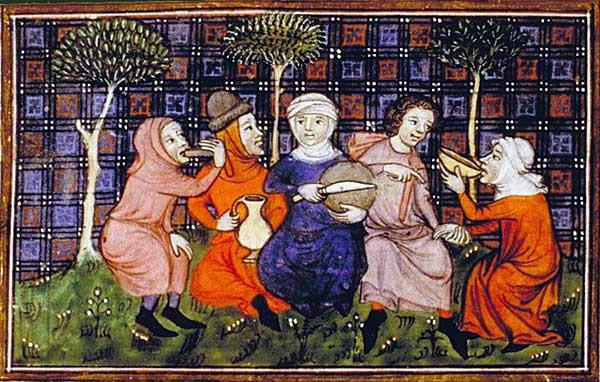
If at first the peasant found himself only in land dependence on the feudal lord or the church, then over time, due to impoverishment, he also lost his personal freedom. This process of enslavement was the result of a severe economic situation experienced by the medieval village and its inhabitants.
The poor man, who was unable to pay the entire debt to the feudal lord, fell into bondage in relation to the creditor and, in fact, turned into a slave. In general, this led to the fact that large land holdings absorbed small ones. This process was also facilitated by the growth political influence feudal lords. Thanks to a large concentration of resources, they became independent of the king and could do whatever they wanted on their land, regardless of the laws. The more the middle peasants became dependent on the feudal lords, the stronger the power of the latter grew.
The way peasants lived in the Middle Ages often depended on justice as well. This kind of power also ended up in the hands of the feudal lords (on their land). The king could declare the immunity of a particularly influential duke so as not to go into conflict with him. Privileged feudal lords could, without regard to central government judge their peasants (in other words, their property).
Immunity also gave the right to a large owner to personally collect all the cash receipts that went to the treasury of the crown (judicial fines, taxes and other fees). Also, the feudal lord became the leader of the militia of peasants and soldiers, which gathered during the war.

Immunity granted by the king was only a formalization of the system of which feudal landownership was a part. Large proprietors owned their privileges long before obtaining permission from the king. Immunity only gave legitimacy to the order in which the life of the peasants passed.
Before there was a revolution in land relations, the main economic unit of Western Europe was the rural community. Also called stamps. Communities lived freely, but at the turn of the 8th and 9th centuries they were a thing of the past. In their place came the estates of large feudal lords, to whom serf communities were subordinate.
They could be very different in their structure, depending on the region. For example, in the north of France, large estates were common, which included several villages. In the southern provinces of the general Frankish state medieval society in the village lived in small estates, which could be limited to a dozen households. This division into European regions was preserved and existed until the abandonment of the feudal system.
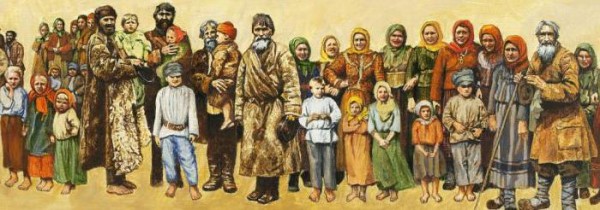
The classical estate was divided into two parts. The first of these was the master's domain, where the peasants worked on strictly defined days, serving their duty. The second part included the yards of the villagers, because of which they became dependent on the feudal lord.
The labor of the peasants was necessarily used in the manor's estate, which, as a rule, was the center of the patrimony and the master's allotment. It included a house and a yard, on which there were various outbuildings, kitchen gardens, orchards, vineyards (if the climate allowed). The master craftsmen also worked here, without whom the landowner also could not do. The estate also often had mills and a church. All this was considered the property of the feudal lord. What the peasants owned in the Middle Ages was located on their plots, which could be located in strips with the landowner's allotments.
Dependent rural workers had to work on the plots of the feudal lord with the help of their inventory, as well as bring their livestock here. Real slaves were used less often (this social stratum was much smaller in number).
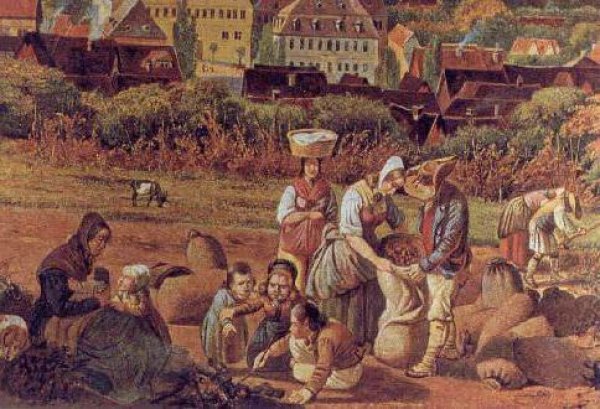
The arable allotments of the peasants were adjacent to each other. They had to use a common area for grazing livestock (this tradition remained with the time of the free community). The life of such a collective was regulated with the help of a rural meeting. It was chaired by the headman, who was elected by the feudal lord.
Subsistence farming prevailed in the patrimony. This was due to the low development of productive forces in the countryside. In addition, there was no division of labor between artisans and peasants in the village, which could increase its productivity. That is, handicraft and domestic work appeared as a by-product of agriculture.
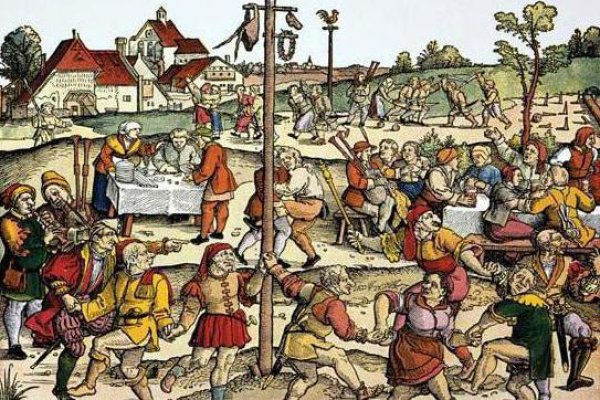
Dependent peasants and artisans provided the feudal lord with various clothes, shoes, and the necessary equipment. What was produced in the estate was for the most part used at the court of the owner and rarely ended up in the personal property of the serfs.
The lack of circulation of goods hindered trade. Nevertheless, it is wrong to say that it did not exist at all, and that the peasants did not participate in it. There were markets, fairs, and money circulation. However, all this did not affect the life of the village and the patrimony. The peasants had no means of independent subsistence, and frail trade could not help them buy off the feudal lords.
With the proceeds from trade, in the village they bought what they could not produce on their own. The feudal lords purchased salt, weapons, as well as rare luxury items that merchants from overseas countries could bring. Rural residents did not participate in such transactions. That is, trade satisfied only the interests and needs of the narrow elite of society, which had extra money.
The way peasants lived in the Middle Ages depended on the size of the dues paid to the feudal lord. Most often it was given in kind. It could be grain, flour, beer, wine, poultry, eggs, or handicrafts.

The deprivation of the remnants of property provoked protests from the peasantry. He could express himself in various forms. For example, villagers fled from their oppressors or even staged mass riots. Peasant uprisings each time suffered defeat due to spontaneity, fragmentation and disorganization. At the same time, even they led to the fact that the feudal lords tried to fix the amount of duties in order to stop their growth, as well as increase discontent among the serfs.
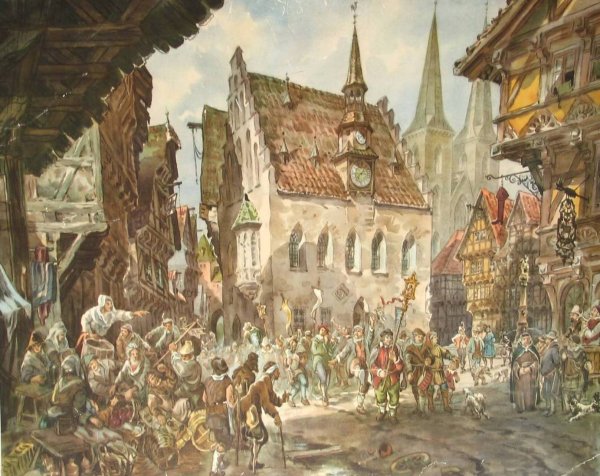
The history of peasants in the Middle Ages is a constant confrontation with large landowners with varying success. These relations appeared in Europe on the ruins of ancient society, where classical slavery generally reigned, especially pronounced in the Roman Empire.
The rejection of the feudal system and the enslavement of the peasants took place in modern times. It was facilitated by the development of the economy (primarily light industry), the industrial revolution and the outflow of the population to the cities. Also at the turn of the Middle Ages and the New Age in Europe, humanistic sentiments prevailed, which put individual freedom at the head of everything else.
The peasant population of the patrimony was not uniform in origin and legal status. It was divided into three main groups - columns (coloni, ingenui), litas and serf slaves (servi, mancipia). The majority of the dependent peasantry in the Carolingian feudal fiefdom were columns. They did not completely lose their personal freedom, but were already in land dependence on the votchinnik, could not leave their allotment, which was in their hereditary use, and were limited in the disposal of this allotment. The bulk of the columns of this era were the descendants of previously free peasants - both Frankish and Gallo-Roman origin.
Over time, they increasingly lost their personal freedom and merged with the litas and slaves planted on the land into one mass of personally dependent peasants Budanov V.P. Middle Ages. M., 2006. Pp. 88.
The slaves (serves) who lived in the patrimony were divided into two categories: yard slaves who did not have an allotment (mancipia non casata), and slaves who sat on the ground (servi casati). The first lived and worked in the manor's yard; they could be sold and bought, and whatever they owned or acquired was regarded as the master's property. Slaves (serfs), endowed with land and attached to it, usually were not alienated without land and, in their actual position, were no longer slaves, but personally dependent peasants. Unlike columns, they were not only in land, but also in complete personal dependence on the feudal lord. For the most part, the serfs were descendants of dependent people of the late Roman and Merovingian times - slaves, columns, etc. Ibid. Page 90..
An intermediate position between the columns and the serfs was occupied by the litas, who were usually under the patronage of some secular or spiritual large landowner and kept their land plot in hereditary use.
Depending on who originally owned the peasant allotments (mansi) - a colon, a lita or a serf - they were called free, Lithuanian or slave (mansi ingenuiles, mansi lidiles, mansi serviles). However, in the ninth century slave or Lithuanian mansi often fell into the hands of the colons, and vice versa. At the same time, the duties that the peasants had to perform in favor of the feudal lord were determined not so much by the legal status of the holder himself, but by the nature of the mansa (free, Lithuanian or slave).
The boundaries in the legal status of certain categories of peasants were gradually erased and they more and more merged into a single mass of dependents. Dependent peasants of all categories were obliged to bear duties in favor of the lord - to perform corvée and pay dues.
The hardest of all was the corvee of the serfs, which usually amounted to at least three days a week. Servos performed particularly difficult work at the same time. The columns also worked on corvee, but their main form was not a weekly corvee, but a piece corvee, in which they undertook to cultivate a certain piece of land in favor of the landowner and harvest from it, perform a cart service, cut wood, etc.
From the beginning of the ninth century there is a tendency to increase the size of the corvée and the columns. All dependent peasants were obliged to pay the lord, in addition, quitrent, for the most part in kind - grain, flour, wine, beer, poultry, eggs, handicrafts. Sometimes quitrent was levied in cash (for example, a head-to-head tax - capaticum) from personally dependent peasants. However, cash rent was not widely used Skazkin S.D. History of the Middle Ages. M., 1977. S. 47
IN southern regions estates, smaller in size, prevailed. The domain occupied less space in them, which was associated with a relatively small corvée, but slave labor on the domain retained its importance longer. With a relatively significant stratum of free allodist peasants, the position of dependents - columns, mancipia, freedmen - retained more of the Late Antique features inherent in the slave state than in the North. By virtue of natural conditions: a mountainous landscape, a warm climate that allowed a variety of cultivated crops - the system of open fields with striped and forced crop rotation in the South was not common. Compact domains and peasant allotments dominated here, on which a multicultural agricultural economy was conducted (cereals, grapes, olives, etc. were cultivated at the same time), and cattle breeding was also developed.
Most of the French peasantry was subjected to heavy feudal exploitation. The serf (serv) was in personal, land and judicial dependence on the lord, i.e. the owner of the seigneury (as the feudal estate was usually called in France), in which he lived. As a personally dependent person, the serf paid a general taxation (capaticum), the so-called marriage tax (forismaritagium), if he married a free person or with a servitor of other lords, a posthumous tax, i.e. extortion from inheritance (manus naortuus, inortuarium), most often in the form of the best head of cattle. Finally, the seigneur could demand unlimited duties and payments from the serf (arbitrary tag).
As hereditary holder land plot the peasant was obliged to work for the seigneur: to serve (as a rule, at least three days a week) field corvée, to perform construction, transport and other duties, to pay taxes in kind and cash, at that time relatively small. As a legally dependent peasant, he had to conduct his lawsuits and sue in the curia (local court) of the seigneur, for which court fees and fines were levied from him. Then he paid the seigneur market, bridge, ferry, road and other duties and taxes. Because
the seigneur had a monopoly on the mill, oven and grape press (the so-called banalities), then the peasants were obliged to grind grain in his mill, bake bread in his oven and crush grapes on his press, paying for the use in kind or money.
Part of the peasants retained personal freedom (villans), but at the same time was in land, and sometimes in judicial dependence on the feudal lord.
The final formalization of feudal relations was accompanied by an increase in exploitation. To the old duties in favor of the lord, more and more were added. The peasants made an additional payment to the landowner for the use of forests, waters and meadows, which used to belong to the peasant community, and in the X-XI centuries. captured feudal lords. The exactions of the feudal lords and the permanent feudal wars made the life of the peasants extremely unsecured Skazkin S.D. History of the Middle Ages. M., 1977. S. 44
Hunger strikes were a common occurrence, and the death rate from starvation was very high. In the event of a crop failure or other natural disasters, inevitable with the low agricultural technology of that time, the population had nowhere to look for help.
